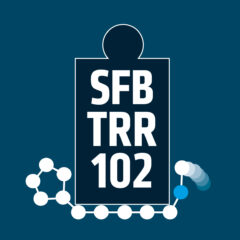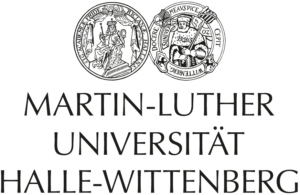Month: November 2017
Lecture Series “Molecular Modelling” at UL (WS 2017/18)
Lectures
Friday, 8:30 am to 10:00 am, Härtelstr. 16-18, Seminar Room 018 (ground floor)
In December, the lectures were given by Prof. Dr. Jens Meiler of Vanderbilt University, U.S.A.,the remaining lectures were given by Prof. Dr. Peter Hildebrand, University of Leipzig.
Lab Training
from January 3, 2018 to January 19, 2018, Härtelstr. 16-18
Details were given during the lectures.
Registration
Please register directly with peter.hildebrand@medizin.uni-leipzig.de
Source: Module Molecular Modelling, UL
Doctoral students seminar (March 13, 2018)
Maria Camilles on “Investigation of effect of thermal denaturation on eye lens crystallin proteins using NMR spectroscopy”
and Muhammad Tariq on “Epitaxial Crystallization of Polyethylene on Molybdenum Disulfide Substrate via Prefreezing”
Continue reading “Doctoral students seminar (March 13, 2018)”
Doctoral students seminar (February 6, 2018)
Effect of End-Capping Motifs on Conformational Dynamics and Stability of α-Helices
by Stefan Wicht
Recent results revealed that stabilizing or destabilizing the ends of the helix affects helix unfolding but not refolding in the center. Thus, helix stability in the center is changed remote from the region of stabilization or destabilization and this non-local effect was attributed either to an impact on boundary diffusion or boundary diffusion distances. We tested the effect of differently charged capping motifs at the N-cap and C-cap position of helical peptides on boundary diffusion or diffusion distances by triplet-triplet-energy-transfer (TTET). It could be demonstrated that introducing opposite charges at the helix termini leads to a global stabilization of the helix, whereas introducing similar charges at the helix termini lead to a global destabilization. This stability effect is in accordance with the helix macro-dipole. However, our results showed that capping motifs do not lead to a change in the diffusion coefficient for boundary diffusion which indicates that longer or shorter diffusion distances are the origin of this stability effect. Temperature dependence measurements revealed that the activation energy of boundary diffusion is also not affected by capping motifs, which was reproduced by calculations using the Lifson-Roig theory for helix-coil transition. These results suggest that capping motifs simply elongate helices by hydrogen bonding of additional residues.
and
Monte Carlo Simulations of Thiophene and Polythiophene Chains of Various Lengths in Vacuum and in Contact with Substrates
by Momchil Ivanov
Thiophene and polythiophenes are a subject of study in the SFB. Poly(3-hexylthiophene-2,5-diyl) or P3HT in particular is a polymer used in organic photovoltaics, therefore, a large amount of experimental data for it exists. Some theoretical models of this particular polymer that exist in the literature as well. I will give a brief introduction into the method of Monte Carlo sampling as a method of simulating the existing models and will present results on simulations of thiophene and P3HT in vacuum as well as in the presence of a substrate.
Location: UL, Linnéstr. 5, SR 218 Time: 3.30pm-5.00pm
Doctoral students seminar (January 16, 2018)
Geometrical stiffness studied by a coarse grained homopolymer model
by Benno Werlich
Morphologies of biopolymers depend on the interaction energies and on stiffness. We use a coarse grained homopolymer model to study geometrical stiffness as bond length variation. Therefore we show a wide range of stable structures which are known from different stiffness approaches and also from experiments. With the help of canonical and microcanonical analysis we created a state diagram for a broad range of stiffness from flexible to very stiff chains. Simulations were performed by Stochastic Monte Carlo Simulations (SAMC).
Location: MLU, Von-Danckelmann-Platz 3, SR E.04 Time: 3.30pm-5.00pm
Talk by Ruth Bärenwald at MLU (December 12, 2017)
Solid state NMR investigations and MD simulations of amphiphilic triblock copolymers in lipid bilayers
Pluronics are triblock copolymers widely used in pharmacological industry that consist of hydrophilic poly(ethylene oxide) end blocks and a hydrophobic poly(propylene oxide) middle block. Depending on the lengths of the different blocks, Pluronics can influence membrane properties in a variety of ways.
Using solid-state nuclear magnetic resonance (NMR), we investigated the structure and dynamics of different Pluronics interacting with a number of phosphatidylcholine membranes with variable bilayer thickness and acyl chain saturation. Continue reading “Talk by Ruth Bärenwald at MLU (December 12, 2017)”
Excursion to Processing Pilot Plant for Biopolymers Schwarzheide (February 21, 2018)
The SFB/TRR 102 arranged an excursion to the Processing Pilot Plant for Biopolymers Schwarzheide on the February 21st, 2018. This research institution was a part of the Fraunhofer Institute for Applied Polymer Research (IAP). Members of the SFB together with its integrated research training group of Martin-Luther-Universität and Universität Leipzig got an insight into research and the facilities of FhI and BASF in Schwarzheide. Continue reading “Excursion to Processing Pilot Plant for Biopolymers Schwarzheide (February 21, 2018)”
[TRR67.IGK] Module “Materials in Medicine – basic” from 29.11. – 01.12.2017 in Dresden
The module gave the medical background for relevant problems of the subprojects. This included relevant disease patterns, latest forms of treatment, difficulties and latest developments in the fields of implants, biomaterials as skin or bone replacement.
Registrations closed!
Joint DIPC, JCNS & SoftComp Workshop 2018: Functional Polymers
Joint DIPC, JCNS & SoftComp Workshop 2018: Functional Polymers
19 – 21 March 2018, San Sebastian, Spain
Flyer workshop on functional polymers
The workshop focuses on advanced polymer materials, and aims to bring together physicists and chemists who are interested in novel polymer nanocomposites, polymers functionalized with supramolecular groups and functional soft nano-objects.
Source: Forschungszentrum Jülich – Functional Polymers
Talk by S. Link at MLU (November 14, 2017)
UV-B induced changes of eye-lens crystallins
Age related cataract is the major cause of blindness worldwide. With the age of 75 years, more than 50% of all people are affected and so far, surgery is the only effective treatment available. For this reason it is important to understand the complex system of the eye lens especially effects of aging like chronic UV-B irradiation.
Many modifications of crystallins by UV-B on already aggregated and destroyed protein have been found. So far, changes in the soluble fractions of the protein are not well investigated. Answering this question, different techniques of solution NMR have been applied to native and irradiated hgD-crystallin to identify and characterize a modified but still soluble state of the protein. This would highlight the first structural changes on the transition from functional soluble protein to dysfunctional aggregates.
Location: MLU, Von-Danckelmann-Platz 3, SR 1.06 Time: 3.30pm






